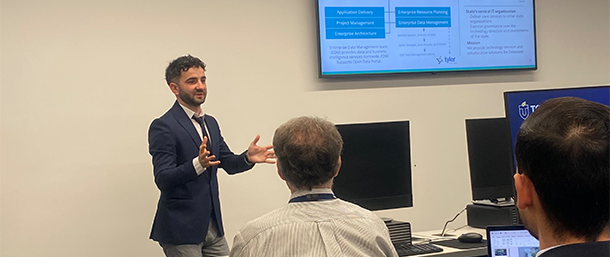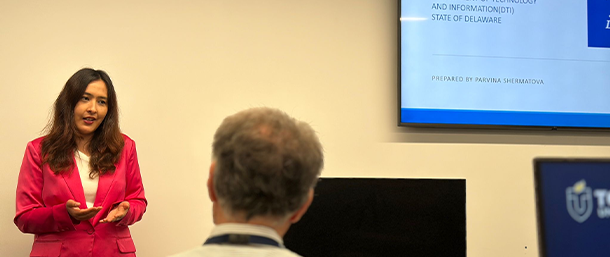Interns Bring Energy, Vision, to Delaware’s Open Data Portal
July 09, 2024 by Philip Wood

The state of Delaware launched its Open Data Portal in 2016 to provide public access to a wide range of datasets maintained by a partnership between various state agencies and the Delaware Department of Technology and Information.
Designed to promote transparency, accountability, and public engagement, the portal today contains over 400 datasets — from categories including public health, transportation, education, and government performance — that Delaware residents can view and download.
Overcoming the Capacity Challenge
Jennifer Koester, director of Enterprise Data Management at the Delaware's Department of Technology and Information, said one of the initial challenges in setting up the portal was finding the time and personnel required to standardize and highlight the uploaded data.
“For some time, the portal had been limited regarding features like PowerBI integration and story development due to capacity,” Koester said.
“What we needed were extra eyes, minds, and time.”

Lasha Gochiashvili presenting his innovative data dashboard for the Delaware school system, showcasing fresh insights into enrollment and dropout trends.
The Role of Interns in Filling Resource Gaps
A solution to this problem came with the arrival of Lasha Gochiashvili and Parvina Shermatova, a pair of interns who joined the department in early 2024.
After completing their onboarding and training, the pair went to work on the Open Data Portal, dedicating four months to auditing data, resolving discrepancies, and standardizing material that had previously been uploaded in a basic CSV format.
Additionally, each intern had the chance to choose a dataset and improve how its data was presented. Shermatova chose to work on the Public Crash Data dataset because of the impact her work could have in identifying automobile accident patterns and trends.
“When I started analyzing the dataset, I realized it had the potential to tell important stories through visualizations,” she said. “Initially, the dataset included only a well-made map. I recognized that creating visualizations could help identify not only where accidents occur, but when they happen most and what factors contribute to them.”
By the end of her internship, the Public Crash Data dataset featured dashboards, visualizations, and improved data usability, making it a more insightful and accessible public resource.
Gochiashvili leveraged his passion for education by developing a comprehensive data dashboard for the Delaware school system. “My project involved analyzing various datasets and crafting charts that narrate a compelling story for educators, school executives, parents, and students, all presented on an engaging dashboard,” he explained.
His analysis of existing data yielded fresh insights into enrollment and dropout trends, and correlations between educators' salaries and years of experience.

Parvina Shermatova discussing her visualizations and improvements to the Public Crash Data dataset, highlighting patterns and trends in automobile accidents.
New Technologies Resolve Age-Old Challenges
During a period when state governments are grappling with workforce shortages and the persistence of outdated technologies, Tyler's Data & Insights software powering the Open Data Portal fulfills several crucial roles. It helps to ensure that the latest data is accessible, which enhances functionality, efficiency, and service quality. Additionally, it cuts down on administrative costs associated with fulfilling data requests. And, given looming workforce retirements, it also draws tech-savvy individuals to the public sector who might otherwise be deterred by the prospect of working with dated technology and processes.
“We're just starting out with a lot of these new technologies, doing things that industry has been doing for a while,” Koester said. “So, I think that it is possible that some [of the] attraction [of workers] to the state comes from these technologies.”
To Koester and her departmental colleagues, Gochiashvili and Shermatova revitalized the process of populating the portal and presenting its contents in innovative ways.
“I’d expected them to come in with new ideas and some technical skills,” Koester said. “What I didn’t anticipate was the level of passion.”
Along with energy and capacity, Gochiashvili and Shermatova brought another important quality: a different point of view.
"Young people see social problems from a different perspective, and they understand that new users of our data are going to want features that we didn’t have before,” Koester said. “Lasha and Parvina gave us a better understanding of the different ways that the data in the portal could be put to use.”
Most importantly, at the end of their four-month internships, Koester wanted the interns to walk away with something tangible.
“It was important that they take what they learned and apply those skills in the real world, something they can demonstrate on their resume to help with their future careers.”